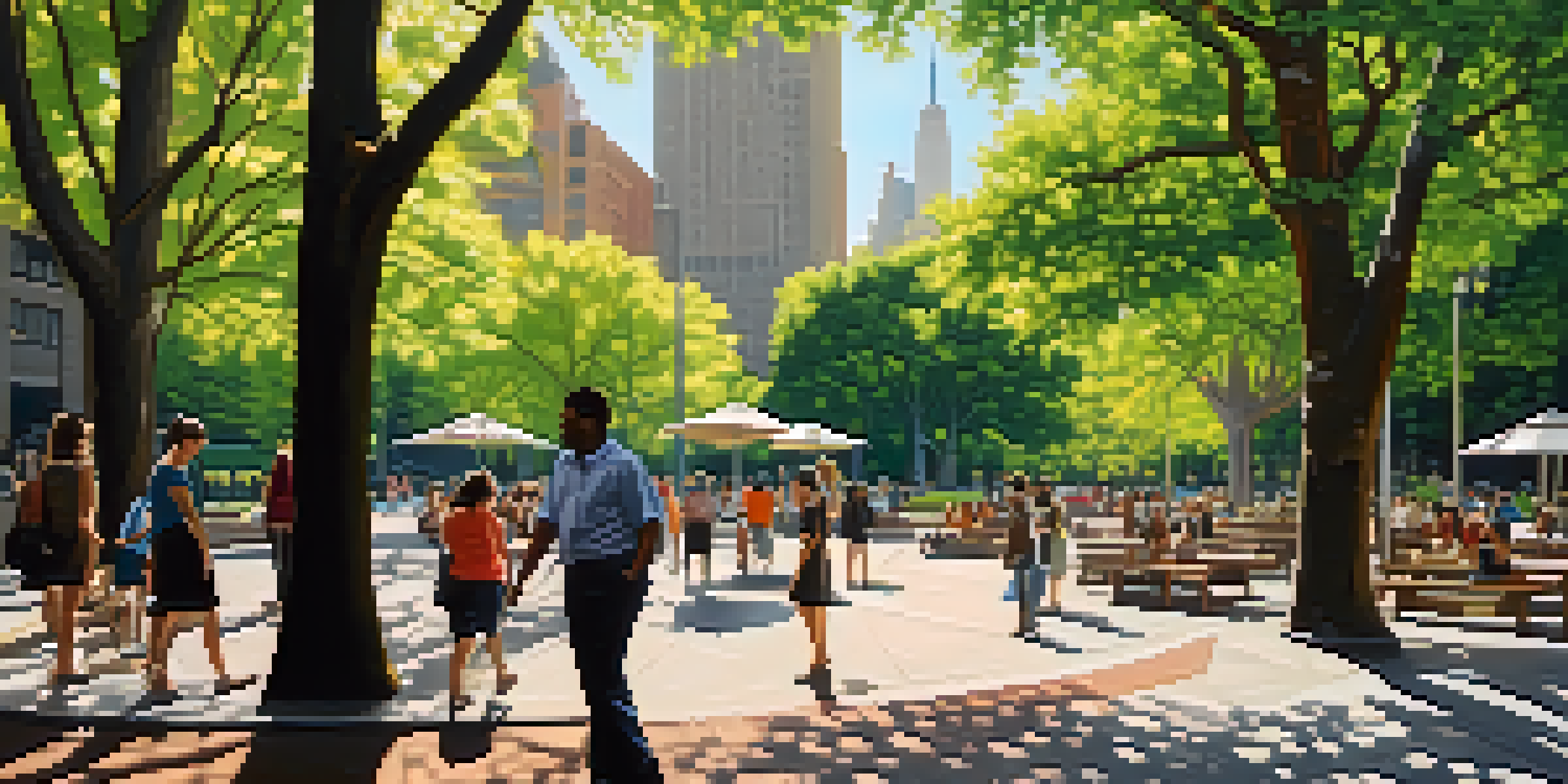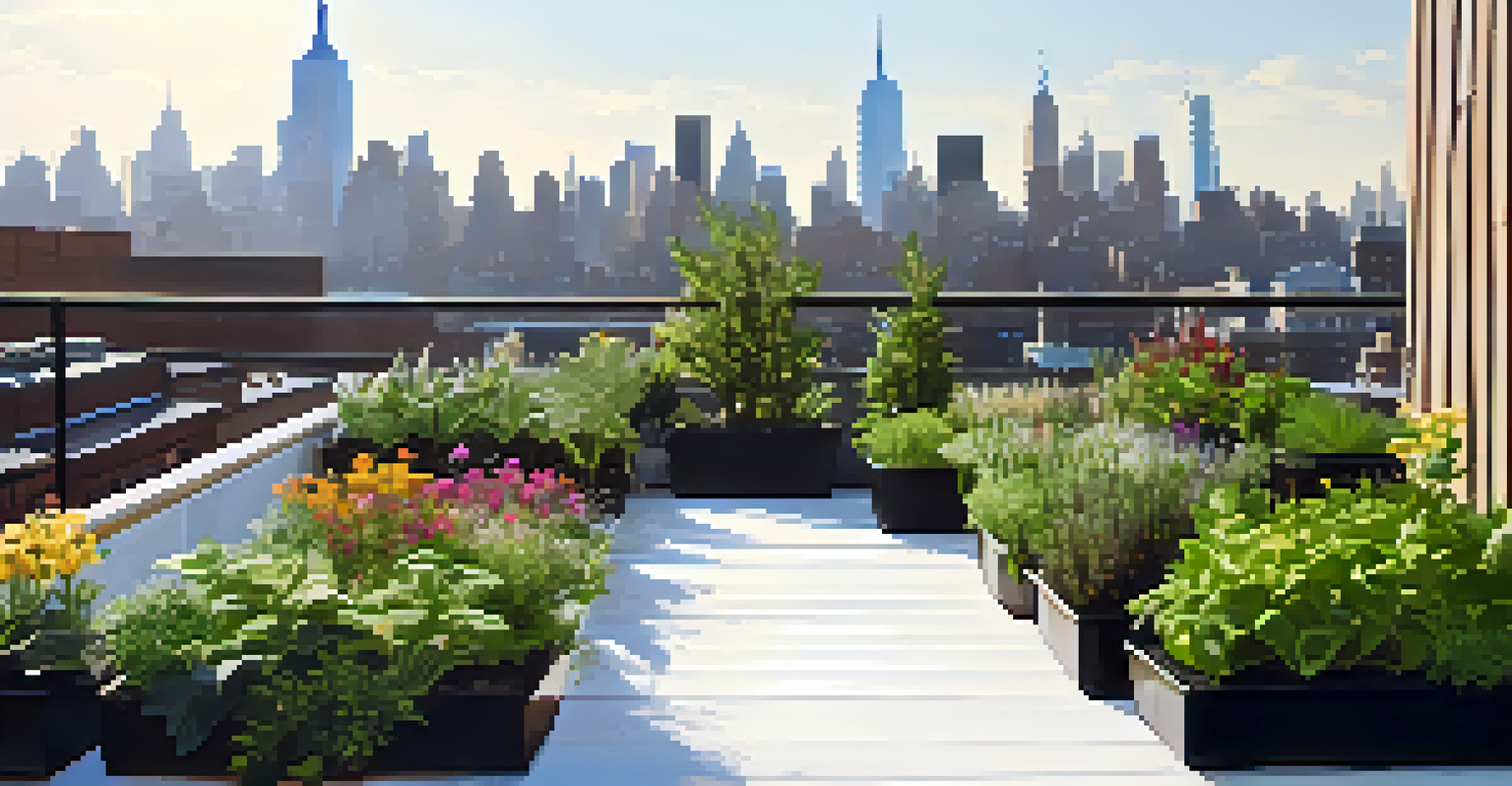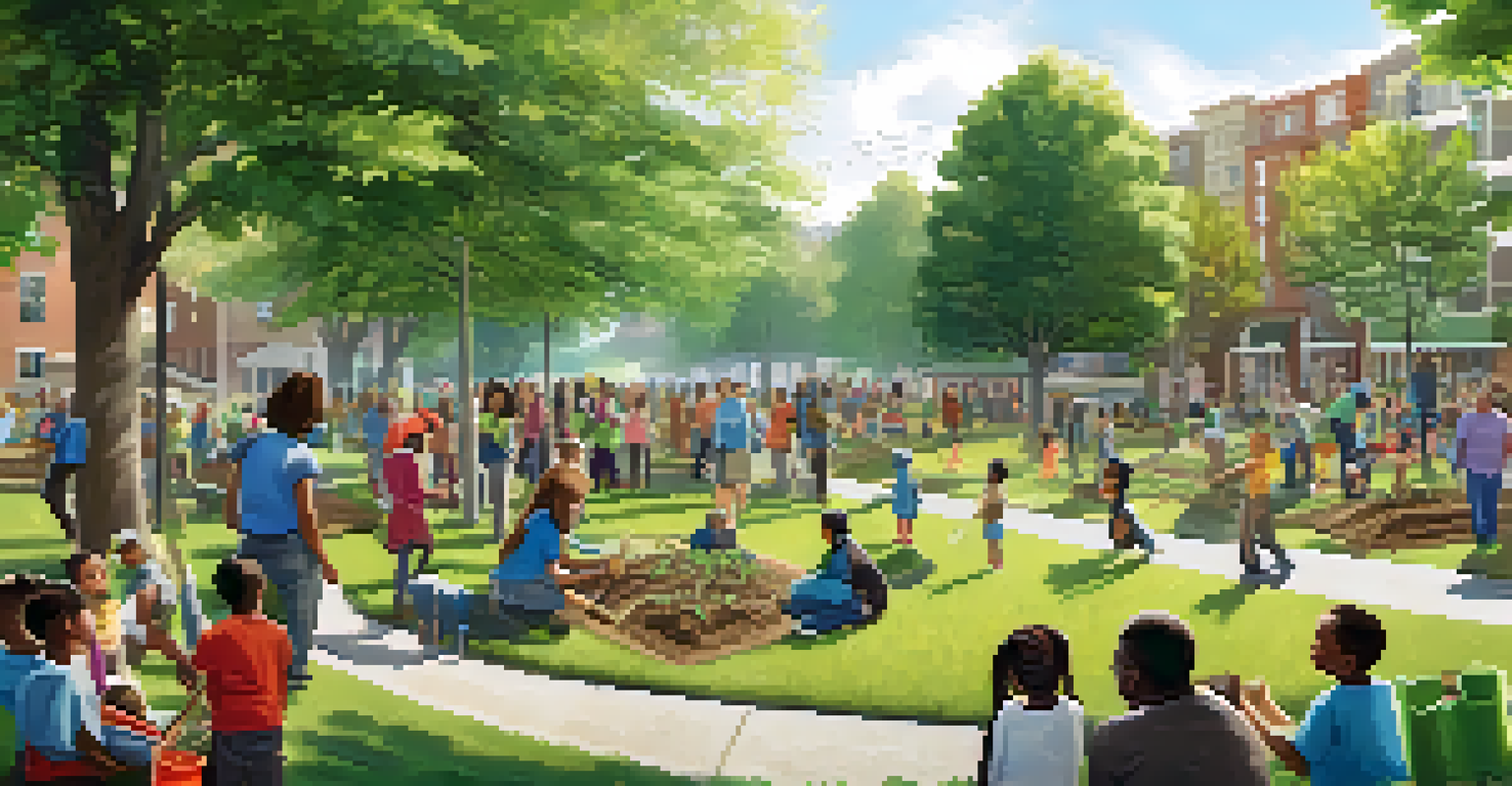Urban Heat Islands: Mitigating Effects in New York City

Understanding Urban Heat Islands and Their Impact
Urban Heat Islands (UHIs) are areas in cities that experience significantly higher temperatures than their rural counterparts. This phenomenon occurs due to human activities, such as the extensive use of concrete, asphalt, and limited vegetation. In New York City, for instance, summer temperatures can soar, exacerbating health issues and increasing energy consumption.
A city is not an accident but the result of coherent visions and aims.
The impact of UHIs is profound, affecting air quality, public health, and overall quality of life. Higher temperatures can lead to heat-related illnesses, particularly among vulnerable populations like the elderly and low-income communities. Additionally, the increased demand for air conditioning during hot days places a strain on the city's energy resources, leading to higher utility bills.
To combat these challenges, understanding the root causes of UHIs is crucial. Factors such as building density, reduced green spaces, and transportation emissions contribute to elevated temperatures. By identifying these factors, we can develop effective strategies to mitigate their effects in urban environments like New York City.
The Role of Green Infrastructure in Cooling Cities
Green infrastructure refers to natural systems that provide environmental benefits, such as parks, green roofs, and urban forests. In New York City, integrating green spaces into urban planning can significantly reduce UHI effects. These spaces not only provide shade but also cool the air through the process of evapotranspiration, where plants release moisture into the atmosphere.

For example, the High Line park in Manhattan has transformed a former elevated railway into a lush green space, providing both recreational opportunities and cooling effects. Such projects not only beautify the city but also contribute to lower surrounding temperatures. The introduction of trees and vegetation can create microclimates that help combat the heat.
Urban Heat Islands Impact Cities
Urban Heat Islands significantly raise temperatures in cities, affecting public health and increasing energy consumption.
Investing in green infrastructure not only addresses UHI concerns but also enhances urban biodiversity and improves mental well-being for residents. As cities become more aware of the benefits of nature-based solutions, incorporating green elements into urban design is becoming a priority.
Reflective and Cool Roofing Techniques
Cool roofing is an innovative approach that involves using materials designed to reflect more sunlight and absorb less heat. In New York City, implementing cool roofs can be a game-changer in mitigating UHI effects. These roofs can lower building temperatures, reducing the need for air conditioning, and ultimately cutting energy costs.
Nature does not hurry, yet everything is accomplished.
For instance, the NYC CoolRoofs initiative encourages building owners to install reflective materials on their rooftops. This not only helps cool the buildings but also contributes to the overall cooling of the urban environment. By utilizing lighter-colored roofing materials, buildings can reflect more sunlight, leading to significant temperature reductions.
The benefits of cool roofs extend beyond individual buildings; they contribute to improved air quality and reduced heat stress across neighborhoods. As more buildings adopt these techniques, the cumulative effect can lead to a cooler and more sustainable city.
Enhancing Urban Tree Canopy for Better Shade
Trees play a vital role in creating shade and cooling urban areas. Increasing the urban tree canopy in cities like New York can significantly mitigate UHI effects. Trees not only provide shade but also release moisture through transpiration, which cools the surrounding air.
The MillionTreesNYC initiative aimed to plant a million trees across the city, demonstrating the commitment to enhancing the urban canopy. By strategically placing trees along streets, in parks, and around buildings, we can create shaded areas that reduce heat absorption. This grassroots effort has made a noticeable difference in many neighborhoods, adding to the city's charm and comfort.
Green Infrastructure Cools Cities
Integrating green infrastructure like parks and trees can effectively mitigate the effects of Urban Heat Islands.
Moreover, a diverse tree canopy can improve biodiversity and provide habitats for various species. As trees mature, their cooling effects become even more pronounced, making it essential to prioritize tree planting and maintenance as part of UHI mitigation strategies.
Urban Planning and Policy for Sustainable Development
Effective urban planning plays a crucial role in mitigating UHI effects. Policymakers must prioritize sustainable development practices that incorporate heat mitigation strategies. By integrating environmental considerations into zoning laws and construction guidelines, cities can create more resilient urban environments.
For instance, implementing regulations that require green roofs or reflective pavements in new developments can lead to noticeable temperature reductions. Additionally, promoting mixed-use developments can reduce reliance on vehicles, thus decreasing emissions that contribute to urban heat.
Collaboration between city officials, environmental organizations, and community groups is essential in creating and enforcing policies that address UHI challenges. By working together, stakeholders can ensure that urban planning efforts align with sustainability goals, ultimately creating a cooler, healthier city.
Community Engagement in UHI Mitigation Efforts
Community engagement is vital in combating Urban Heat Islands. Educating residents about the benefits of green infrastructure and sustainable practices can lead to grassroots efforts that make a significant impact. When communities come together, they can advocate for changes that benefit their neighborhoods, such as tree planting and green space development.
Programs that involve local residents in tree care and maintenance can foster a sense of ownership and responsibility. For example, community-led initiatives like tree stewardship not only enhance local greenery but also strengthen community bonds. Engaged citizens are more likely to support policies aimed at reducing UHI effects.
Technology Enhances Heat Mitigation
Innovative technologies such as smart sensors and heat mapping enable cities to identify and address Urban Heat Island hotspots.
Moreover, public awareness campaigns can help residents understand how their actions contribute to heat mitigation. Simple changes, like planting more plants or using reflective materials, can collectively lead to a cooler urban environment.
Technological Innovations for Urban Cooling Solutions
Advancements in technology are playing a crucial role in addressing Urban Heat Islands. Innovations such as smart sensors and data analytics can help cities monitor temperature variations and identify UHI hotspots. By understanding where heat is most concentrated, targeted strategies can be developed to cool these areas effectively.
For example, urban heat mapping projects allow city planners to visualize temperature distributions across neighborhoods. This information can inform decisions about where to plant trees, install cool roofs, or create green spaces. The use of technology ensures that mitigation efforts are data-driven and efficient.

Furthermore, technology can facilitate community engagement by providing platforms for residents to report heat-related issues or suggest improvements. By harnessing technology, cities can create a more responsive approach to UHI challenges, ultimately leading to a cooler and more sustainable urban environment.